The Functionalization of a Honeycomb Polystyrene Pattern by Excimer Treatment in Liquid
Abstract
:1. Introduction
2. Materials and Methods
2.1. Materials and Treatment
2.2. Analytical Methods
3. Results
3.1. Surface Morphology—Honeycomb Pattern (HCP)
3.2. Surface Chemistry and SEM Analysis
4. Conclusions
Author Contributions
Funding
Institutional Review Board Statement
Data Availability Statement
Conflicts of Interest
References
- Male, U.; Shin, B.K.; Huh, D.S. Coupling of breath figure method with interfacial polymerization: Bottom-surface functionalized honeycomb-patterned porous films. Polymer 2017, 119, 206–211. [Google Scholar] [CrossRef]
- Rodríguez-Hernández, J. Wrinkled interfaces: Taking advantage of surface instabilities to pattern polymer surfaces. Prog. Polym. Sci. 2015, 42, 1–41. [Google Scholar] [CrossRef] [Green Version]
- Bui, V.T.; Ko, S.H.; Choi, H.S. Large-Scale Fabrication of Commercially Available, Nonpolar Linear Polymer Film with a Highly Ordered Honeycomb Pattern. ACS Appl. Mater. Interf. 2015, 7, 10541–10547. [Google Scholar] [CrossRef] [PubMed]
- Bui, V.T.; Ko, S.H.; Choi, H.S. A surfactant-free bio-compatible film with a highly ordered honeycomb pattern fabricated via an improved phase separation method. Chem. Commun. 2014, 50, 3817–3819. [Google Scholar] [CrossRef] [PubMed]
- Bui, V.T.; Lee, H.S.; Choi, J.H.; Choi, H.S. Highly ordered and robust honeycomb films with tunable pore sizes fabricated via UV crosslinking after applying improved phase separation. Polymer 2015, 74, 46–53. [Google Scholar] [CrossRef]
- Munoz-Bonilla, A.; Fernández-García, M.; Rodríguez-Hernández, J. Towards hierarchically ordered functional porous polymeric surfaces prepared by the breath figures approach. Prog. Polym. Sci. 2014, 39, 510–554. [Google Scholar] [CrossRef] [Green Version]
- Fajstavrová, K.; Rimpelová, S.; Fajstavr, D.; Švorčík, V.; Slepička, P. Cell Behavior of Primary Fibroblasts and Osteoblasts on Plasma-Treated Fluorinated Polymer Coated with Honeycomb Polystyrene. Materials 2021, 14, 889. [Google Scholar] [CrossRef]
- Slepička, P.; Neznalová, K.; Fajstavr, D.; Kasálková, N.S.; Švorčík, V. Honeycomb-like pattern formation on perfluoroethylenepropylene enhanced by plasma treatment. Plasma Proc. Polym. 2019, 16, 1900063. [Google Scholar] [CrossRef]
- Neznalová, K.; Fajstavr, D.; Rimpelová, S.; Kasálková, N.S.; Kolská, Z.; Švorčík, V.; Slepička, P. Honeycomb-patterned poly(L-lactic) acid on plasma-activated FEP as cell culture scaffold. Polym. Deg. Stab. 2020, 181, 109370. [Google Scholar] [CrossRef]
- Neznalová, K.; Sajdl, P.; Švorčík, V.; Slepička, P. Cellulose acetate honeycomb-like pattern created by improved phase separation. eXPRESS Polym. Lett. 2020, 14, 1078–1088. [Google Scholar] [CrossRef]
- Heng, L.; Wang, B.; Li, M.; Zhang, Y.; Jiang, L. Advances in Fabrication Materials of Honeycomb Structure Films by the Breath-Figure Method. Materials 2013, 6, 460–482. [Google Scholar] [CrossRef] [PubMed] [Green Version]
- Hurtuková, K.; Fajstavrová, K.; Rimpelová, S.; Vokatá, B.; Fajstavr, D.; Kasálková, N.S.; Siegel, J.; Švorčík, V.; Slepička, P. Antibacterial properties of a honeycomb-like pattern with cellulose acetate and silver nanoparticles. Materials 2021, 14, 4051. [Google Scholar] [CrossRef] [PubMed]
- Siegel, J.; Savenkova, T.; Pryjmaková, J.; Slepička, P.; Šlouf, M.; Švorčík, V. Surface Texturing of Polyethylene Terephthalate Induced by Excimer Laser in Silver Nanoparticle Colloids. Materials 2021, 14, 3263. [Google Scholar] [CrossRef] [PubMed]
- Slepicka, P.; Siegel, J.; Lyutakov, O.; Kasalkova, N.S.; Kolska, Z.; Bacakova, L.; Svorcik, V. Polymer nanostructures for bioapplications induced by laser treatment. Biotechnol. Adv. 2018, 36, 839–855. [Google Scholar] [CrossRef] [PubMed]
- Rebollar, E.; Castillejo, M.; Ezquerra, T.A. Laser Induced Periodic Surface Structures on Polymer Films: From Fundamentals to Applications. Eur. Polym. J. 2015, 73, 162–174. [Google Scholar] [CrossRef] [Green Version]
- Chen, H.Y.; Liu, J.L.; Xu, W.C.; Wang, Z.F.; Wang, C.Y.; Zhang, M. Selective assembly of silver nanoparticles on honeycomb films andtheir surface-enhanced Raman scattering, Colloids and Surfaces A: Physicochem. Eng. Asp. 2016, 506, 782–788. [Google Scholar] [CrossRef]
- Galeotti, F.; Hartmann, L.; Botta, C. Robust surface patterning by parylene-reinforced breath figures: An enabling tool for liquid crystal microcell arrays. J. Colloid Interf. Sci. 2016, 465, 47–53. [Google Scholar] [CrossRef]
- Kim, T.H.; Kim, M.; Manda, R.; Lim, Y.J.; Cho, K.J.; Hee, H.; Kang, J.W.; Lee, G.D.; Lee, S.H. Flexible Liquid Crystal Displays Using Liquid Crystal-Polymer Composite Film and Colorless Polyimide Substrate. Curr. Opt. Photonics 2019, 3, 66–71. [Google Scholar]
- Le, T.H.; Mai, U.K.G.; Huynh, D.P.; Nguyen, H.T.; Luu, A.T.; Bui, V.T. Surfactant-free GO-PLA nanocomposite with honeycomb patterned surface for high power antagonistic bio-triboelectric nanogenerator. J. Sci. Adv. Mater. Dev. 2022, 7, 100392. [Google Scholar] [CrossRef]
- Zhang, S.; Xu, T.; Chai, S.; Zhang, L.; Wu, L.; Li, H. Supramolecular star polymer films with tunable honeycomb structures templated by breath figures. Polymer 2017, 117, 306–314. [Google Scholar] [CrossRef]
- Huh, M.; Gauthier, M.; Yun, S.I. Honeycomb structured porous films prepared from arborescent graft polystyrenes via the breath figures method. Polymer 2016, 107, 273–281. [Google Scholar] [CrossRef]
- Yuan, M.S.; Xu, W.; He, Q.G.; Cheng, J.G.; Fu, Y.Y. Research progress of breath figure method in device application. Chin. J. Analytic. Chem. 2022, 50, 44–52. [Google Scholar] [CrossRef]
- Slepička, P.; Elashnikov, R.; Ulbrich, P.; Staszek, M.; Kolská, Z.; Švorčík, V. Stabilization of sputtered gold and silver nanoparticles in PEG colloid solutions. J. Nanopart. Res. 2015, 17, 11–26. [Google Scholar] [CrossRef]
- Siegel, J.; Grossberger, D.; Pryjmaková, J.; Šlouf, M.; Švorčík, V. Laser-Promoted Immobilization of Ag Nanoparticles: Effect of Surface Morphology of Poly(ethylene terephthalate). Nanomaterials 2022, 12, 792. [Google Scholar] [CrossRef] [PubMed]
- Ou, Y.; Wang, L.Y.; Zhu, L.W.; Wan, L.S.; Xu, Z.K. In-situ immobilization of silver nanoparticles on self-assembled honeycomb-patterned films enables surface-enhanced Raman scattering (SERS) substrates. J. Phy. Chem. C 2014, 118, 11478–11484. [Google Scholar] [CrossRef]
- Falak, S.; Shin, B.K.; Yabu, H.; Huh, D.S. Fabrication and characterization of pore-selective silver-functionalized honeycomb-patterned porous film and its application for antibacterial activity. Polymer 2022, 244, 124646. [Google Scholar] [CrossRef]
- Liao, Z.; Ma, Y.; Yao, S.; Zhang, J.; Han, Y.; Xu, K. Honeycomb-patterned porous graphene film for electrochemical detection of dopamine. Appl. Surf. Sci. 2022, 605, 154725. [Google Scholar] [CrossRef]
- Slepička, P.; Neznalová, K.; Fajstavr, D.; Švorčík, V. Nanostructuring of honeycomb-like polystyrene with excimer laser. Prog. Org. Coat. 2020, 145, 105670. [Google Scholar] [CrossRef]
- Fajstavr, D.; Neznalová, K.; Kasálková, N.S.; Rimpelová, S.; Kubičíková, K.; Švorčík, V.; Slepička, P. Nanostructured Polystyrene Doped with Acetylsalicylic Acid and Its Antibacterial Properties. Materials 2020, 13, 3609. [Google Scholar] [CrossRef]
- Reznickova, A.; Chaloupka, A.; Heitz, J.; Kolska, Z.; Svorcik, V. Surface properties of polymers treated with F-2 laser. Surf. Interface Anal. 2012, 44, 296–300. [Google Scholar] [CrossRef]
- Rebollar, E.; Perez, S.; Hernandez, M.; Domingo, C.; Martin, M.; Ezquerra, T.A.; Ruiz, J.P.G.; Castillejo, M. Physicochemical modifications accompanying UV laser induced surface structures on poly(ethylene terephthalate) and their effect on adhesion of mesenchymal cells. Phys. Chem. Chem. Phys. 2014, 16, 17551–17559. [Google Scholar] [CrossRef] [PubMed]
- Slepička, P.; Peterková, L.; Rimpelová, S.; Pinkner, A.; Kasálková, N.S.; Kolská, Z.; Ruml, T.; Švorčík, V. Plasma activated perfluoroethylenepropylene for cytocompatibility enhancement. Polym. Deg. Stab. 2016, 130, 277–287. [Google Scholar] [CrossRef]
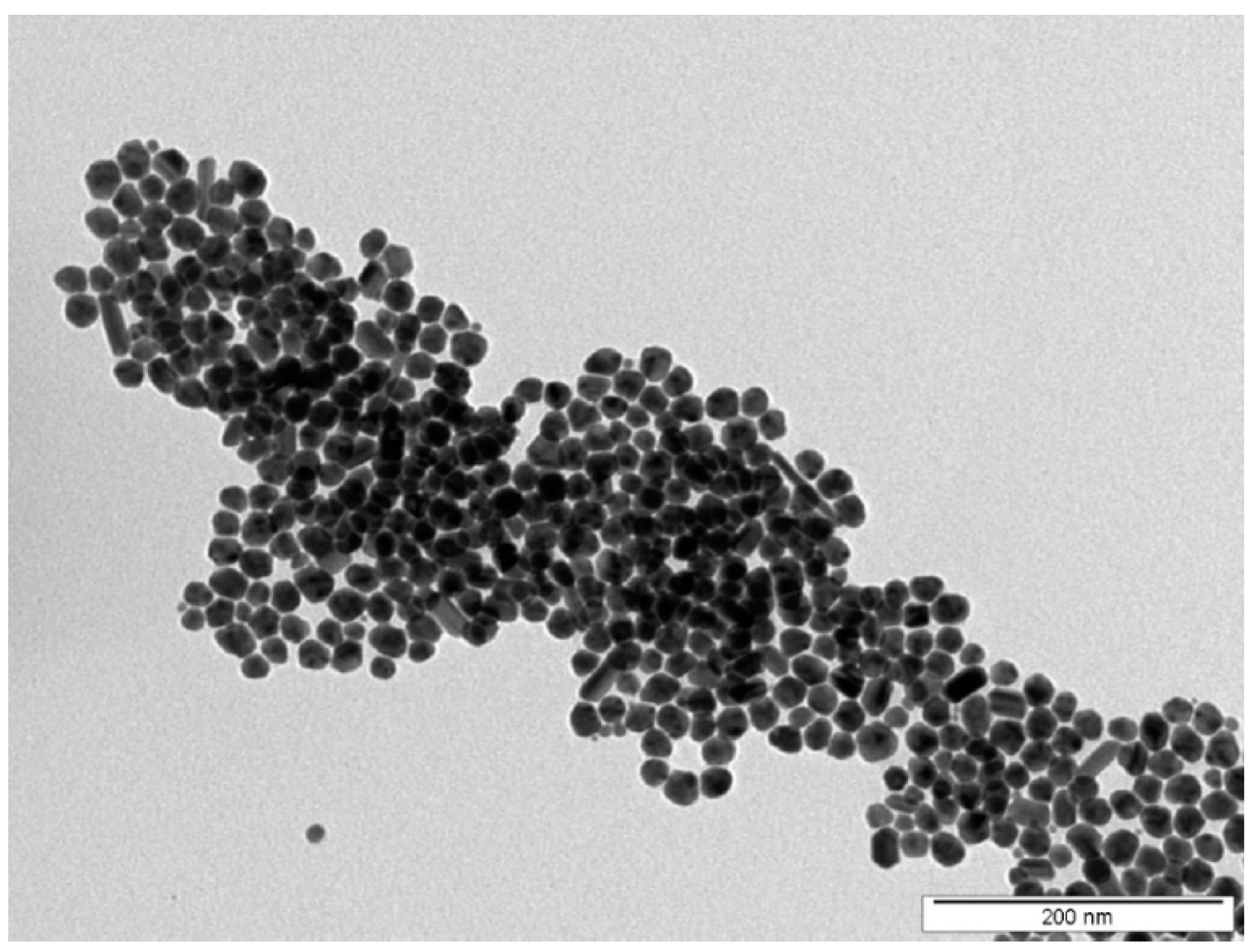
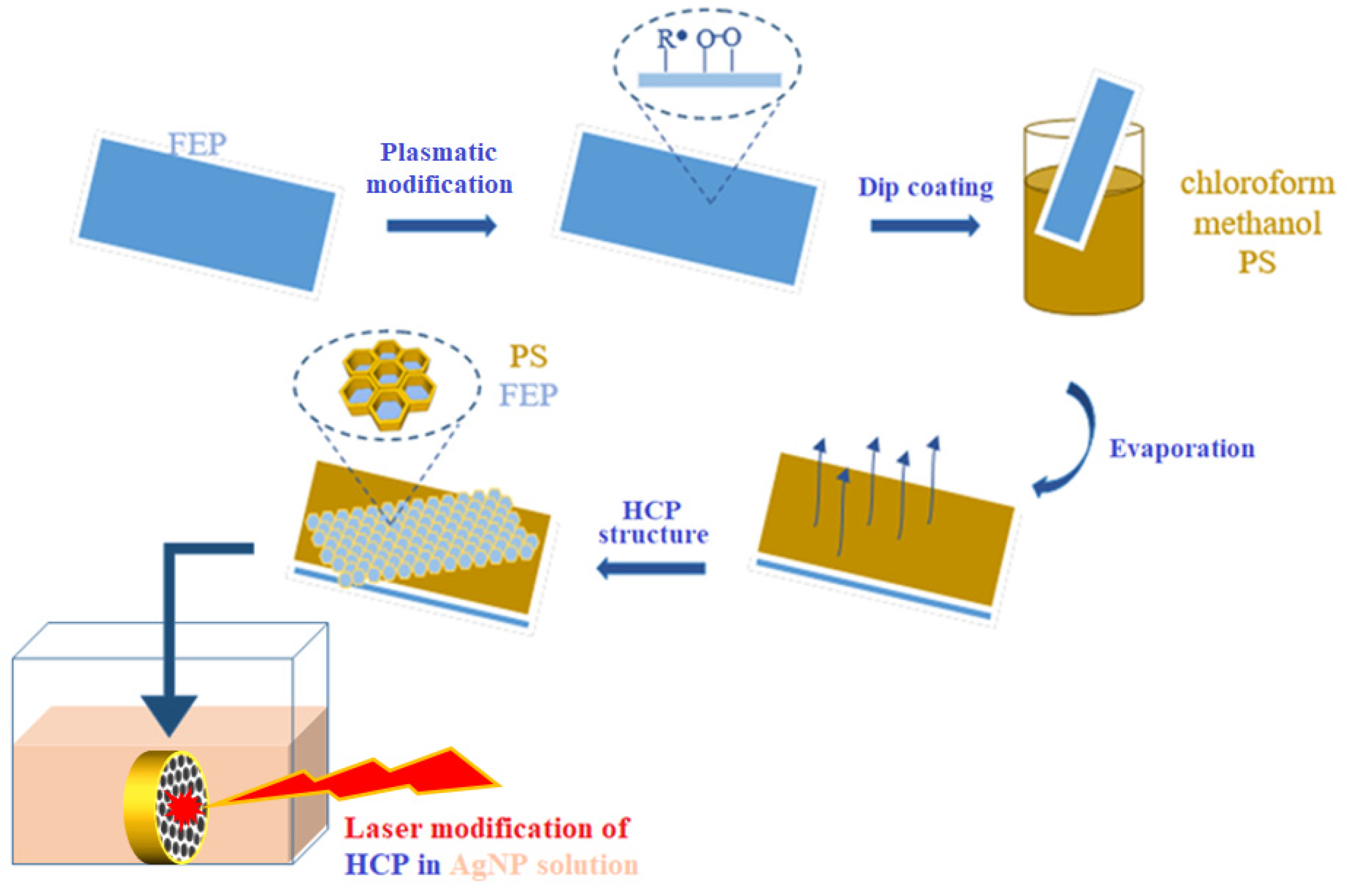



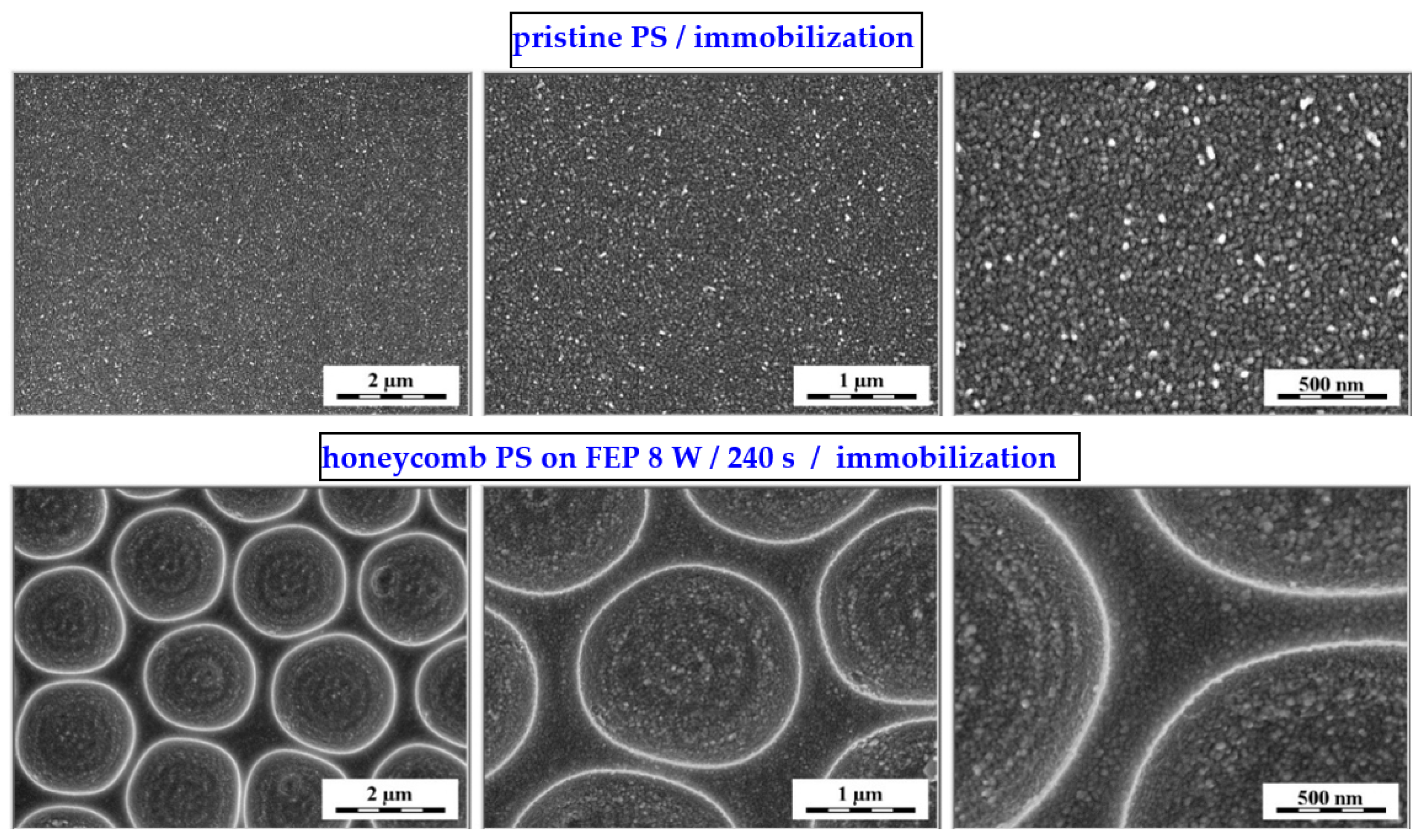
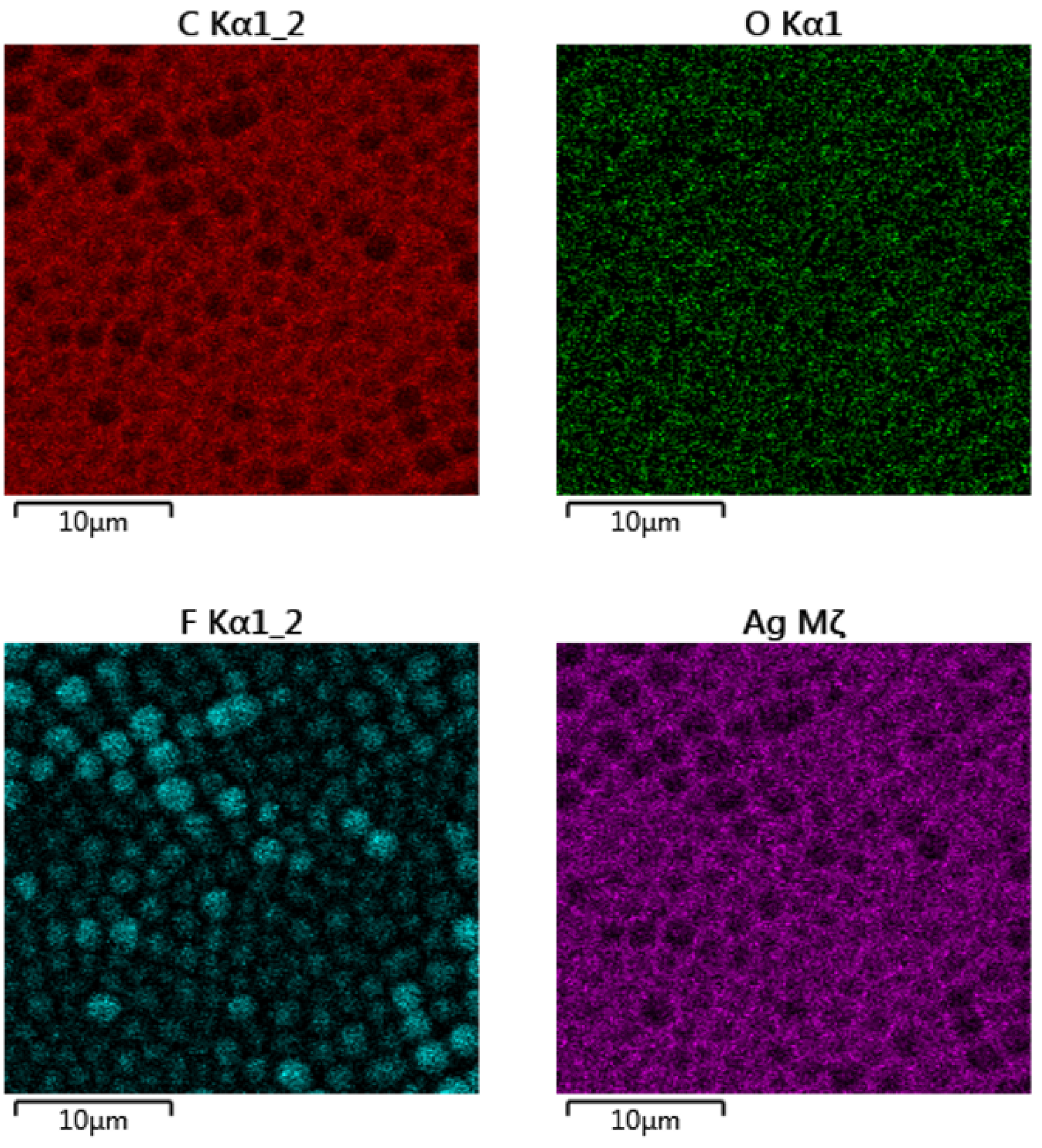
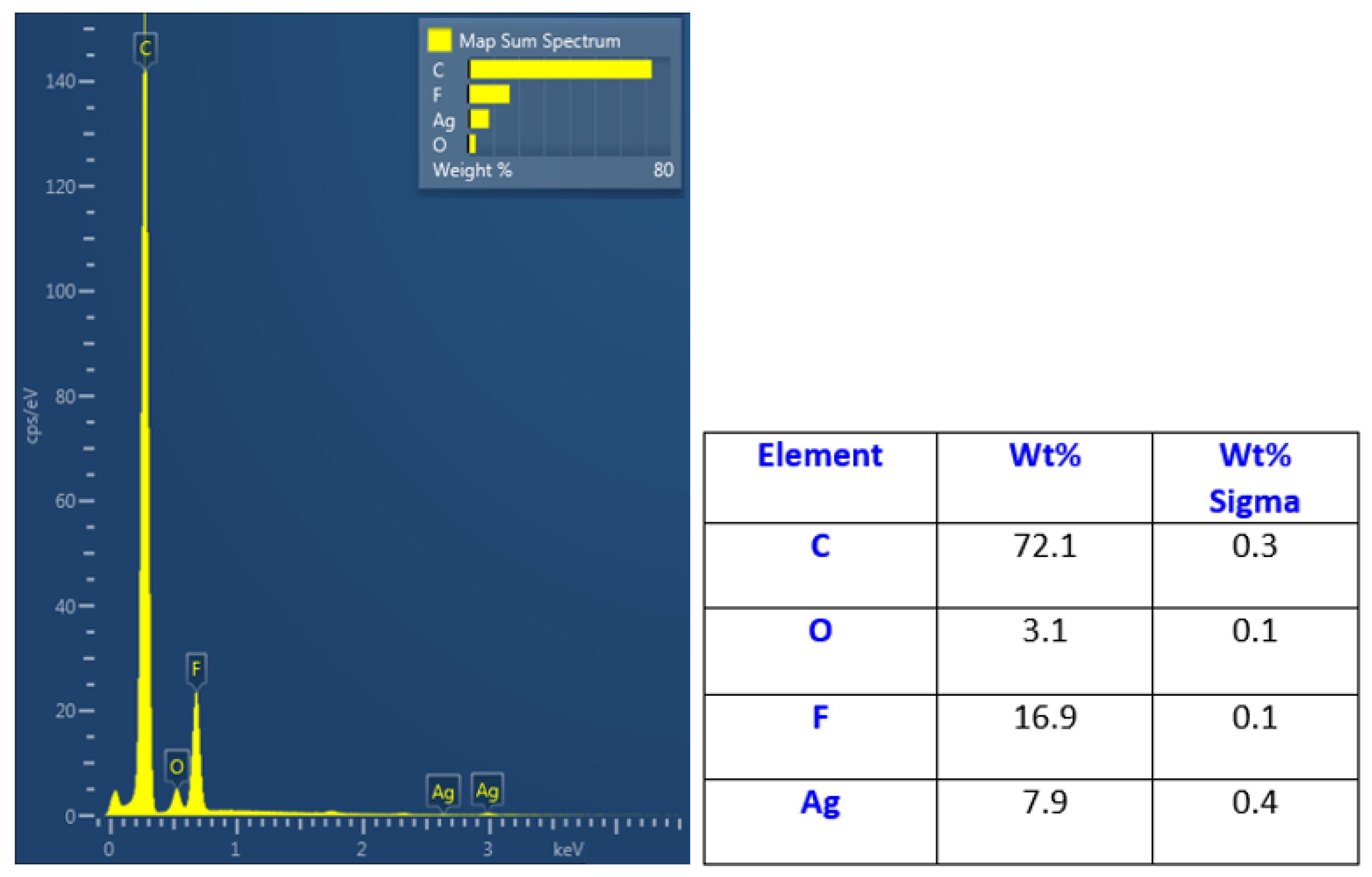

Publisher’s Note: MDPI stays neutral with regard to jurisdictional claims in published maps and institutional affiliations. |
© 2022 by the authors. Licensee MDPI, Basel, Switzerland. This article is an open access article distributed under the terms and conditions of the Creative Commons Attribution (CC BY) license (https://creativecommons.org/licenses/by/4.0/).
Share and Cite
Slepička, P.; Siegel, J.; Šlouf, M.; Fajstavr, D.; Fajstavrová, K.; Kolská, Z.; Švorčík, V. The Functionalization of a Honeycomb Polystyrene Pattern by Excimer Treatment in Liquid. Polymers 2022, 14, 4944. https://doi.org/10.3390/polym14224944
Slepička P, Siegel J, Šlouf M, Fajstavr D, Fajstavrová K, Kolská Z, Švorčík V. The Functionalization of a Honeycomb Polystyrene Pattern by Excimer Treatment in Liquid. Polymers. 2022; 14(22):4944. https://doi.org/10.3390/polym14224944
Chicago/Turabian StyleSlepička, Petr, Jakub Siegel, Miroslav Šlouf, Dominik Fajstavr, Klára Fajstavrová, Zdeňka Kolská, and Václav Švorčík. 2022. "The Functionalization of a Honeycomb Polystyrene Pattern by Excimer Treatment in Liquid" Polymers 14, no. 22: 4944. https://doi.org/10.3390/polym14224944
APA StyleSlepička, P., Siegel, J., Šlouf, M., Fajstavr, D., Fajstavrová, K., Kolská, Z., & Švorčík, V. (2022). The Functionalization of a Honeycomb Polystyrene Pattern by Excimer Treatment in Liquid. Polymers, 14(22), 4944. https://doi.org/10.3390/polym14224944







